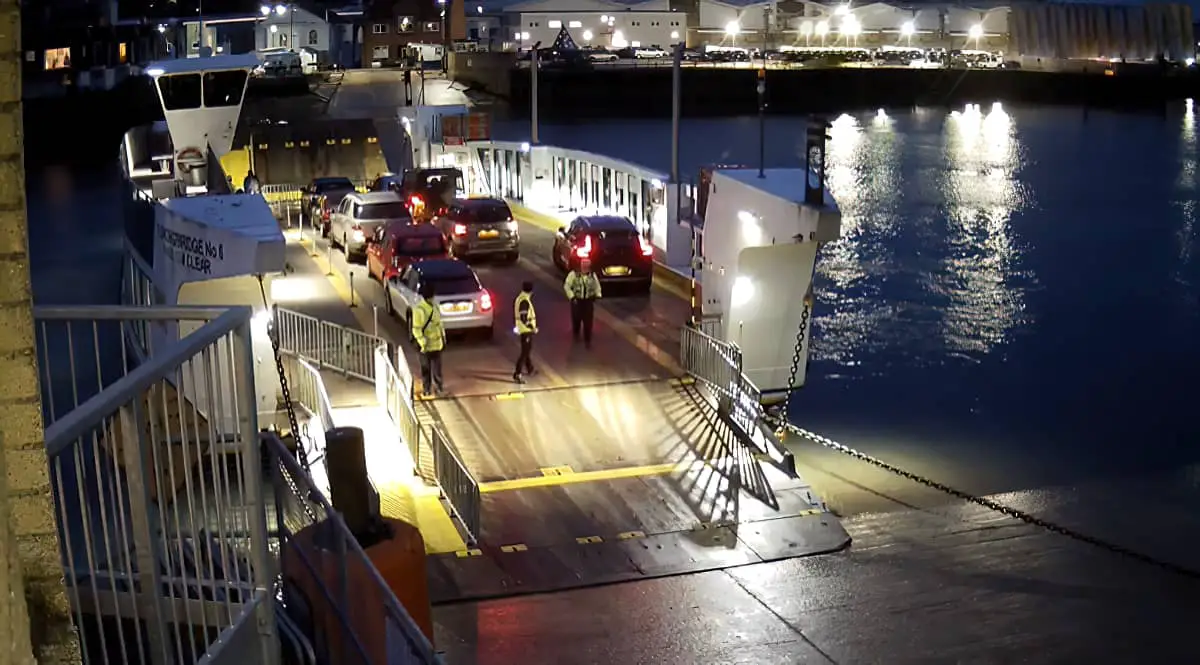The Cowes Floating Bridge, which has been out of service for almost four months whilst major modifications and repairs have taken place, is now back in service, albeit slower than before, say passengers.
The Floating Bridge was taken out of service in August 2021 when a problem with the drive motor was discovered. The latest set of works has seen repairs and modifications to the prows and ramps.
Since coming back into service on Monday morning, passengers have told News OnTheWight the crossings are now taking an average of five minutes.
IWC: “Fractionally longer”
This is a couple of minutes longer than the council suggest. A spokesperson for the Isle of Wight council told News OnTheWight,
“Historically, the Floating Bridge has taken between 2½-3minutes to cross the River Medina. Following the recent repairs, the crossing time is, at this time, on average fractionally longer (3-3½ minutes).
“We have chosen to make the crossing at a very slightly slower speed both to get the best performance from the modifications made to the vessel, and to maintain a smooth and quiet crossing. This change has no effect on the floating bridge schedule.”
Quite what, “This change has no effect on the floating bridge schedule” means, when the Floating Bridge’s own Website only states the time of the first cross and the last crossing as the timetable.
Still using the push-boat
In addition to the slower crossing, the bridge still requires the MV Seaclear push-boat to hold the Bridge in place during certain tides – at a considerable cost to the council.
Jordan: Decision on future in January
At last month’s Isle of Wight council Cabinet meeting Cllr Phil Jordan explained that a decision is due to be made in January about the best way forward for the long term with the Floating Bridge. He said,
“If the report [the Cabinet Office Gateway 5 Review] led us down the path of choosing to procure a new vessel, that would take about three years to procure and then we are faced, as always, with the question that if that was the case, do we just leave no crossing there for the three years?
“The answer is probably that we shouldn’t do that therefore the costs that we’ve incurred and loss of revenue is something that we’ve had to do to try and maintain the crossing. I think the positive decision for the future is still to come.”
Image: © Isle of Wight Council





